Intellectual Property Due Diligence: Review of Patent Ownership and Title
March 10, 2025
By: Mary Lou Wakimura and Giovanna H. Fessenden-Fairbank
Published in the American Bar Association Business Law Section publication Business Law Today. Access the article on the American Bar Association's website.
An intellectual property (“IP”) portfolio may include patent assets, copyrighted works, trademarks, and trade secrets. Understanding ownership, title, and cloud on title (e.g., third-party rights) of IP assets is of key importance in review and initial valuation of a target portfolio. In particular, understanding specific party ownership and any intervening third-party rights of patent assets and copyright assets is a focal point in IP due diligence. This understanding emanates from title searches through the U.S. Patent and Trademark Office (“USPTO”) online database, examination of the chain of title via the USPTO Abstract of Title, and an audit of software assets for open source software (“OSS”) license terms.
Chain of Title
For U.S. patent applications and U.S. granted patents, the USPTO Assignment Recordation Branch has an online database, the Patent Assignment Search, that allows one to search for recorded title.[1] The online search may be performed based on assignee name (e.g., employer company), assignor name (e.g., employee inventor), application number, patent number, application publication number, or reel/frame numbers (if known).
The search results in a listing called an “Abstract of Title” for the given patent asset (patent application or granted patent). The listing shows recorded conveyances or transfers of patent rights; security interests (liens) against the patent rights; and, if any, forgiveness of the security interests. The sequence (date order) of the recorded component parts in the Abstract of Title informs the searcher of the so-called title and any intervening third-party rights in the patent asset.
Under U.S. patent laws, patent rights begin with or originally vest in the named inventors of the corresponding patent application. Assignment of each inventor’s rights to an assignee (e.g., by employees under employment contract obligations to assign such rights to their employer corporate entity) is typically a first “leg” in the chain of title. A typical example of a second “leg” in the chain of title is a company-to-company assignment from the initial employer corporate entity to a merging or acquiring entity. Another example one may find in the Abstract of Title is recordal of a third party’s interest or intervening rights in the patent asset. Third-party rights may be in the form of a lien, mortgage, or other security interest where the subject patent or patent application is used as collateral to secure the loan or debt.
It is important that the conveyance documents (original assignments by inventors, merger/acquisition documents in pertinent part, loans with a security interest) be recorded at the USPTO Assignment Recordation Branch against each affected U.S. patent, U.S. patent application, and Patent Cooperation Treaty (“PCT”) international patent application. Such recordal provides notice to the public of one’s patent rights or interests therein. An interest in a patent asset may be statutorily void against a subsequent purchaser or mortgagee unless that interest is recorded at the USPTO within three months from the conveyance/assignment/grant of rights, or prior to the date of such subsequent purchase or mortgage.[2]
OSS Licenses
OSS and OSS licenses provide another source of IP rights. Specifically, OSS licenses convey patent and copyright use rights to programmer users, end users, and third-party beneficiaries. In the due diligence review of a target IP portfolio, both the software assets created by the portfolio owner and the software assets used (imported) by the portfolio owner should be evaluated. The corresponding software code of these software assets should be audited to determine which OSS licenses apply and, in turn, what, if any, patent use rights exist per the OSS licenses. Note that there are likely patent use rights granted to the portfolio owner as well as patent use rights granted by the portfolio owner under the OSS licenses at play. The latter has potentially far-reaching impact (third-party beneficiary use rights) on the portfolio owner’s patent assets.
Conclusion
In conducting IP due diligence on a target portfolio, a thorough review and assessment of ownership and title should encompass the following steps:
- Search USPTO assignment records. Review recorded title transfers in the USPTO Patent Assignment Search to identify any gaps in the chain of title during the diligence period (ensuring title changes were recorded within three months of assignment or prior to any subsequent transactions).
- Examine the chain of title. Investigate the USPTO Abstract of Title to identify any third-party rights, such as security interests or liens, that could affect ownership.
- Audit software assets for OSS license terms. Review open-source software licenses to determine if any terms grant third parties (or third-party beneficiaries) rights to patent assets in the target portfolio, potentially limiting the portfolio owner’s control over certain IP assets.
Given the increasing prevalence of OSS licensing, IP due diligence now requires additional scrutiny. Patent attorneys with expertise in both computer science and OSS licensing are uniquely equipped to address these complex issues. Their combined knowledge of software engineering and intellectual property law enables them to navigate the intricate and ever-evolving challenges in this space with greater precision and insight.
-
Patent Assignment Search, U.S. Patent & Trademark Off. (last visited Feb. 19, 2025). ↑
-
See 35 U.S.C. § 261. ↑





